Panasonic G Macro 30 mm f/2.8 ASPH. MEGA O.I.S.
3. Build quality and image stabilization
In the photo below the Panasonic G Macro 30 mm f/2.8 ASPH. MEGA O.I.S. is positioned next to another system lens with a similar focal length, the Panasonic Lumix G 25 mm f/1.7 ASPH.
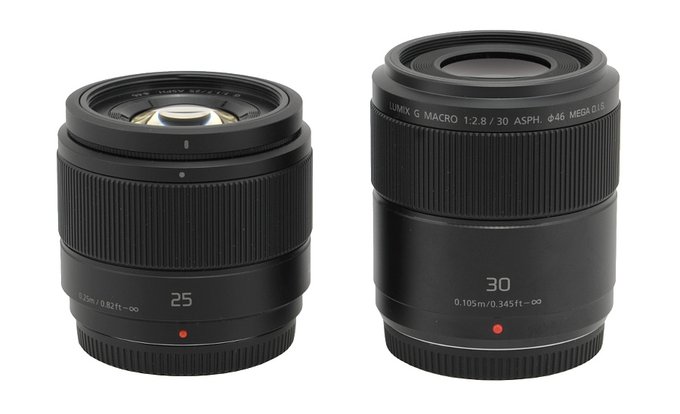 |
Please Support UsIf you enjoy our reviews and articles, and you want us to continue our work please, support our website by donating through PayPal. The funds are going to be used for paying our editorial team, renting servers, and equipping our testing studio; only that way we will be able to continue providing you interesting content for free. |
- - - - - - - - - - - - - - - - - - - - - - - - - - - - - - - - - - - - - - - - - - - - - - - -
The tested lens starts with a metal mount which surrounds contacts embedded in a black, plastic ring; on that ring you see the serial number of the lens and information that the lens was made in Japan. A rear element is im mobile and almost 22 mm in diameter.
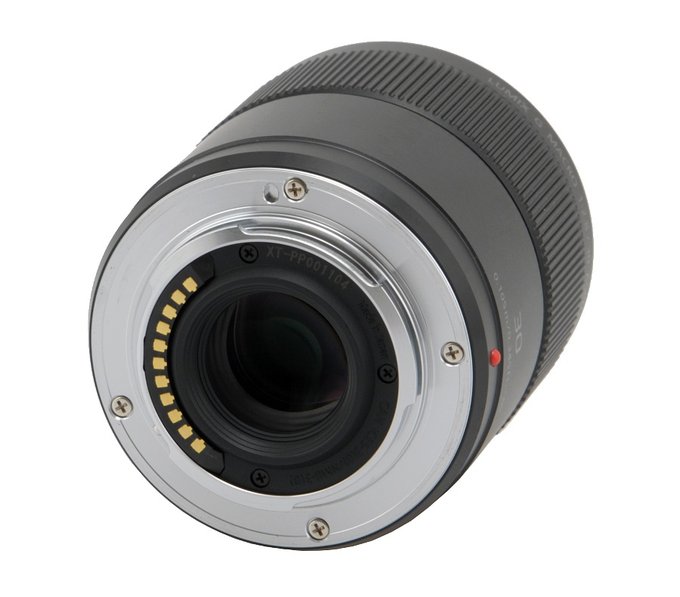 |
The proper body of the Panasonic 2.8/30 starts with a metal ring which doesn’t move; on it you can find a red dot making an alignment with a camera easier. That ring increases its diameter and on its wider part there is a focal length marking, information concerning the focusing range (from 0.105m/0.345ft to infinity), the name of the company, production line, the mount type along with the logo of the lens. Once again you see the “Made in Japan” inscription.
A manual focus ring, as wide as 21 mm and completely covered by plastic ribs, is the next part of the lens. It doesn’t feature any distance or depth of field scale. It is a direct-drive linear stepping motor; running through the whole range takes a turn through an angle of about 360 degrees. That value increases noticeably if you turn the ring slower.
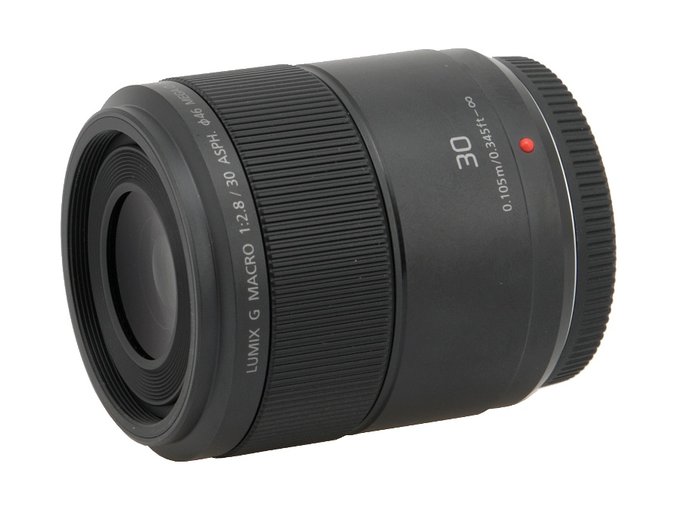 |
The macro capabilities of the lens are 1:1 life-size magnification scale; the photographed objects are situated about 2.5 centimetres from the front element.
The next part is a metal immobile ring on which you see an inscription with the name and parameters of the lens. There’s no hood mount; it seems the constructors of the Panasonic 2.8/30 Macro didn’t anticipate such a possibility.
The front element doesn’t move, it is 25 mm in diameter and surrounded by a non-rotating filter thread, 46 mm in diameter.
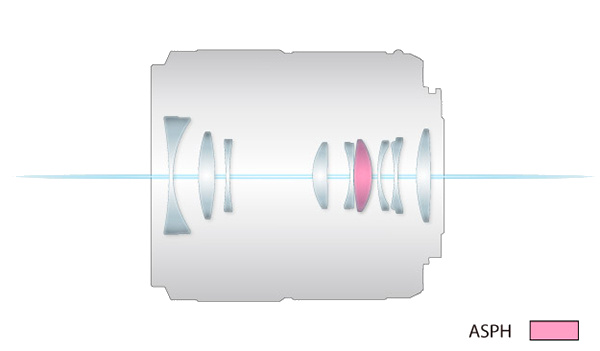
When it comes to the optical construction you deal here with nine elements positioned in 9 groups, one of them aspherical. Inside you can also find a round aperture with seven blades which can be closed down to f/22 at the maximum.
Buyers get both caps and a soft pouch for the lens in the box.
 |
Optical stabilization
We made our standard optical stabilization test: by taking several dozen photos at every exposure time ranging from 1/80 to ½ of a second with the stabilization unit switched on and off. Then we calculated the percentage of blurred photos for every time of exposure. The appropriate graph, showing that percentage, correlative with the exposure time expressed in EV (and the 0 EV point corresponds to 1/60 of a second), is presented below. In this part of the test we used the Panasonic G7 camera.
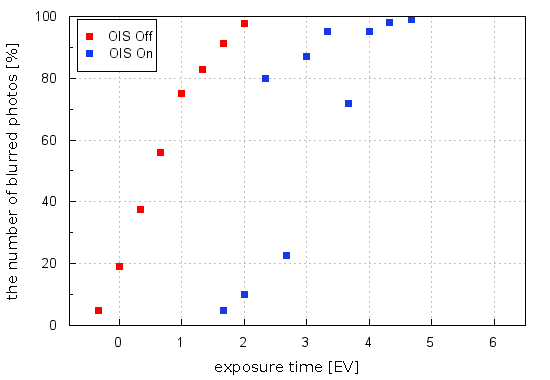
What can be said: the stabilization performance is really strange. At one exposure time it works very well, at another, differing by just 1/3 EV from the first one, it is not efficient at all. Even for those points where you actually can determine the distance between two curves the efficiency never exceeds 2.5 EV. Such a result is not impressive; after all the best stabilized lenses can be as efficient as 4.5 EV.






